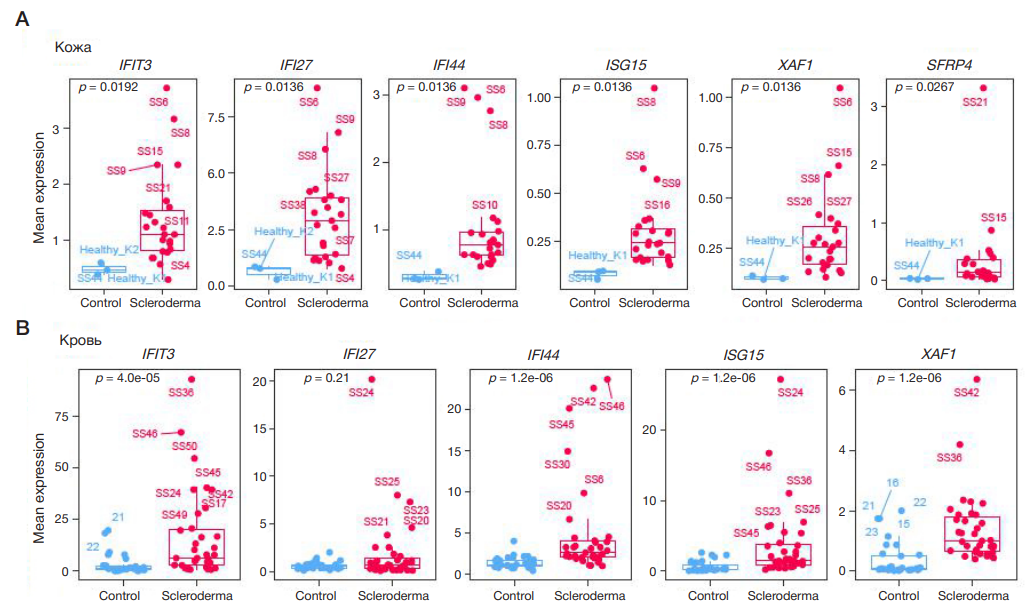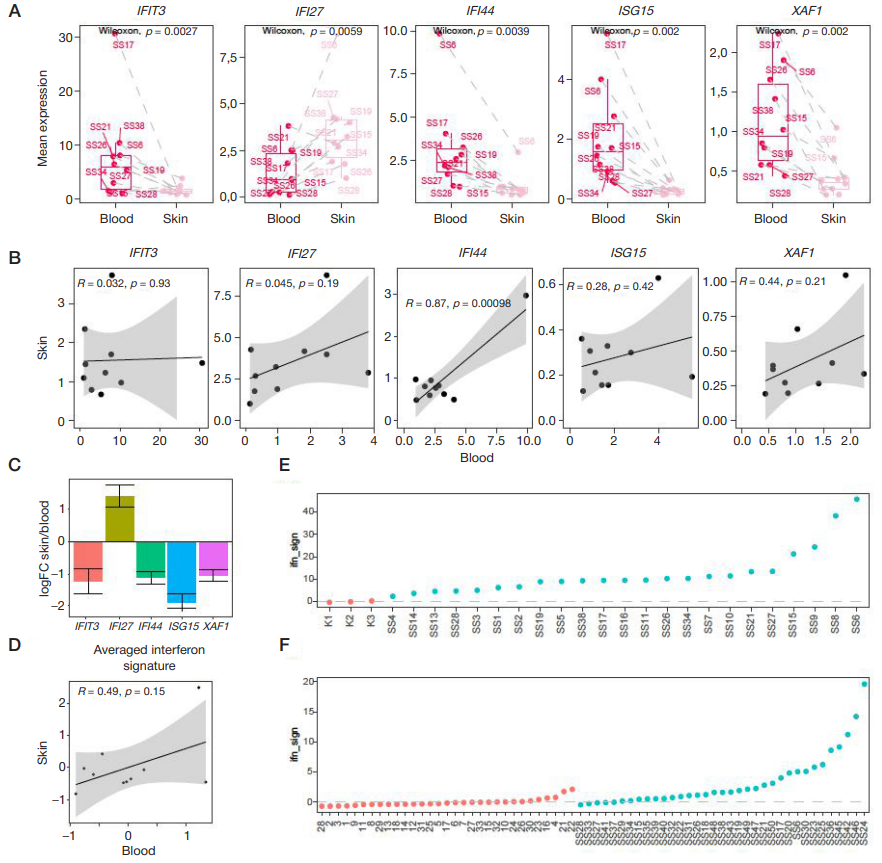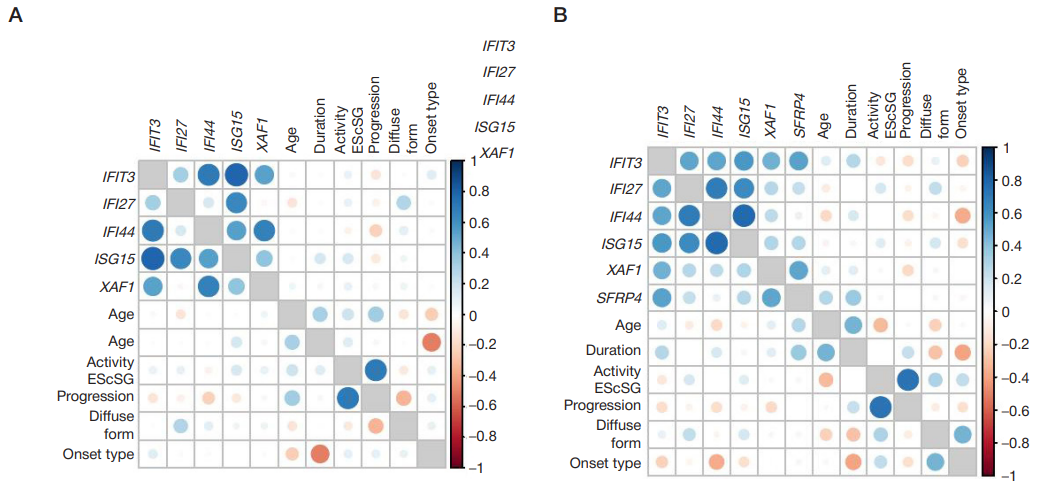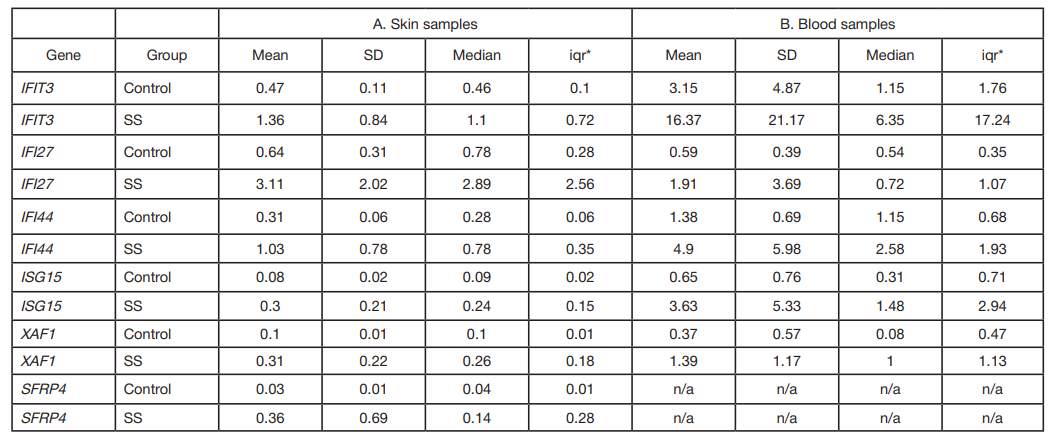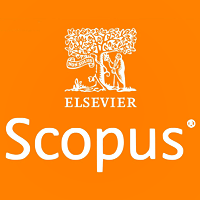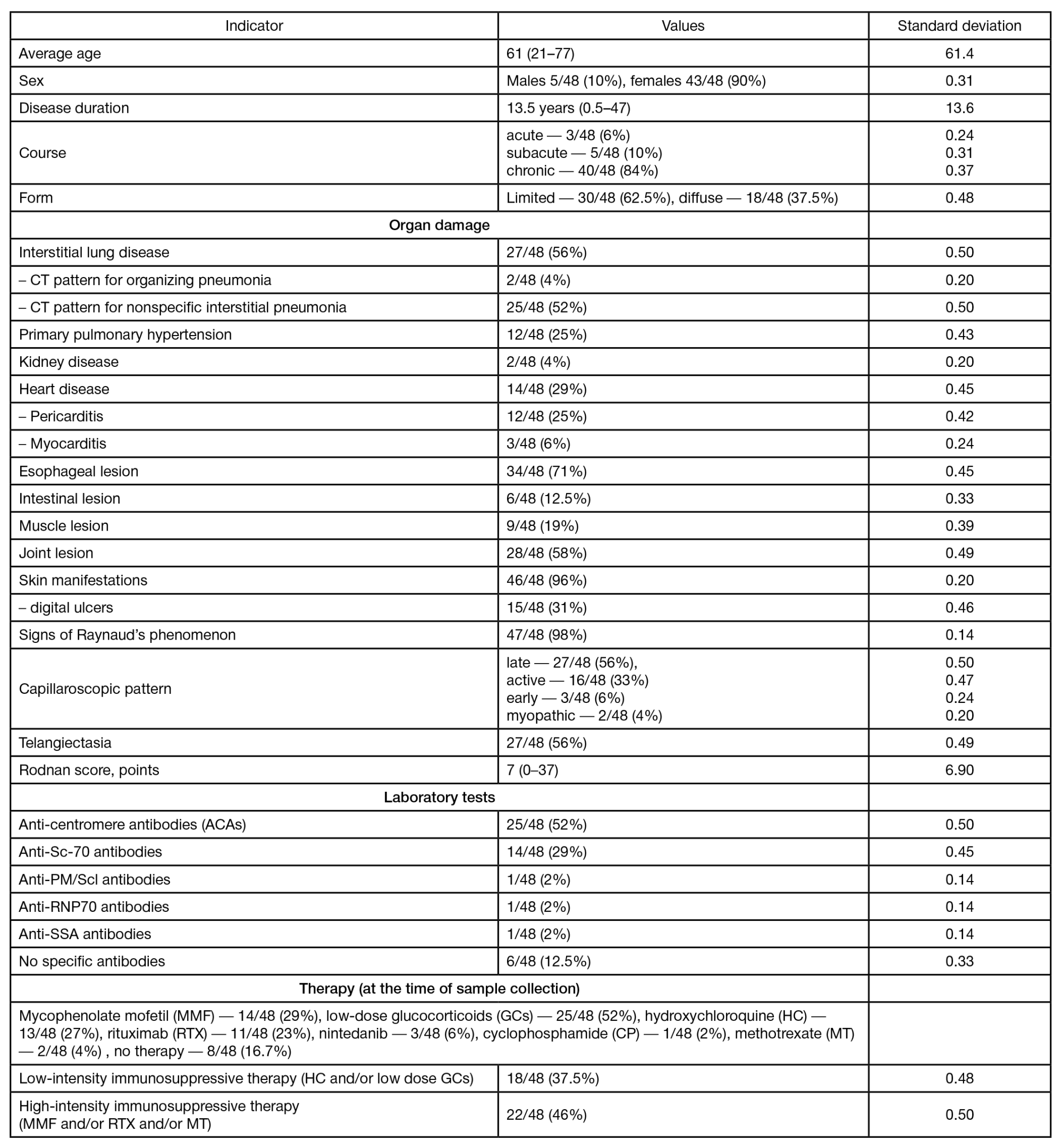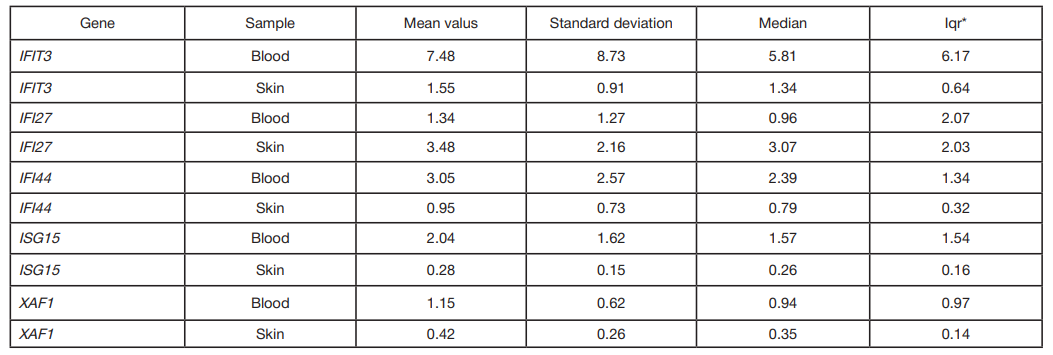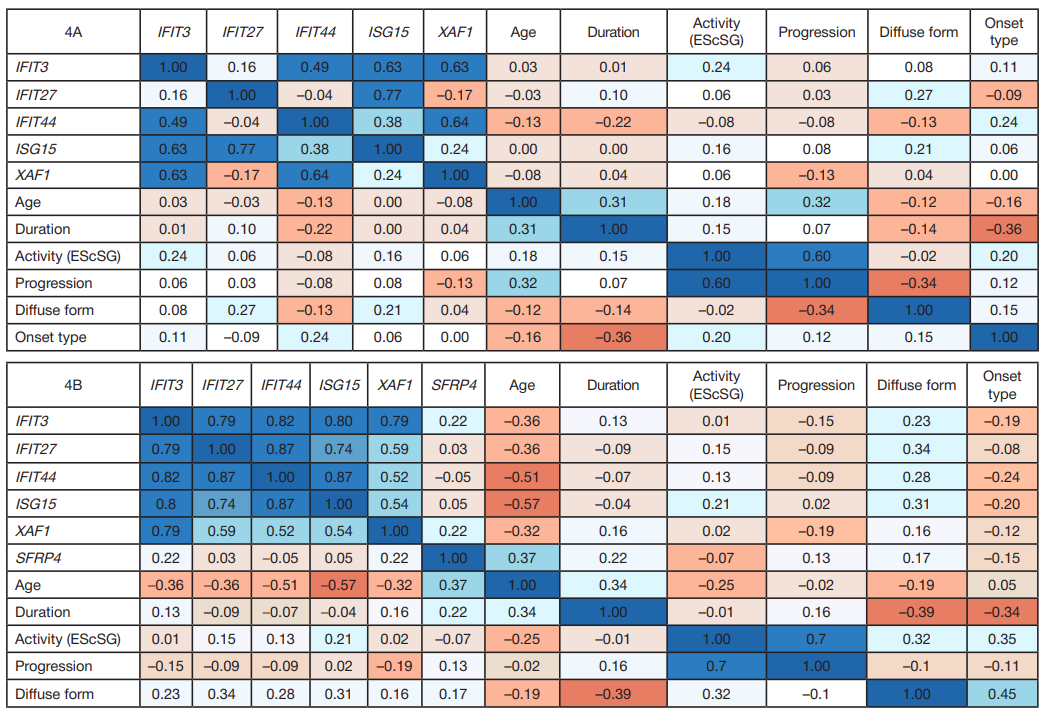
This article is an open access article distributed under the terms and conditions of the Creative Commons Attribution license (CC BY).
ORIGINAL RESEARCH
Panel of IFN-I-induced genes in systemic scleroderma: a stratification biomarker potential
1 Pirogov Russian National Research Medical University, Moscow, Russia
2 MyLaboratory LLC, Moscow, Russia
3 Moscow City Research Center Hospital No. 52, Moscow, Russia
4 Federal Scientific and Clinical Center of Resuscitation and Rehabilitation, Moscow, Russia
5 Shemyakin and Ovchinnikov Institute of Bioorganic Chemistry Russian Academy of Sciences, Moscow, Russia
Correspondence should be addressed: Olga V. Britanova
Miklukho-Maklaya, 16/10, Moscow, 117997, Russia; moc.liamg@natirblo; Zinaida Yu. Mutovina — Pekhotnaya, 3, Moscow, 123182, Russia, ur.liam@anivotumz
Funding: the study was supported by the grant from the Moscow Government (R&D project No. 1603-47/23 dated 08.06.2023), sponsored by the Moscow Center for Innovative Technologies in Healthcare.
Author contribution: Mutovina ZYu — concept; Zhurina TI, Saifullin RF — acquisition of rheumatology and medicine data; literature review; Myshkin MYu — data analysis; Bufeeva LS — sample collection, RNA extraction; Shagina IA — RT-qPCR optimization and procedure, primary data analysis, manuscript writing, literature review; Turchaninova MA, Golovina OA, Britanova OV — manuscript writing, literature review.
Compliance with ethical standards: the study was conducted in accordance with the Declaration of Helsinki. The informed consent for biomaterial collection and testing during inpatient assessment settings was obtained from all patients.
